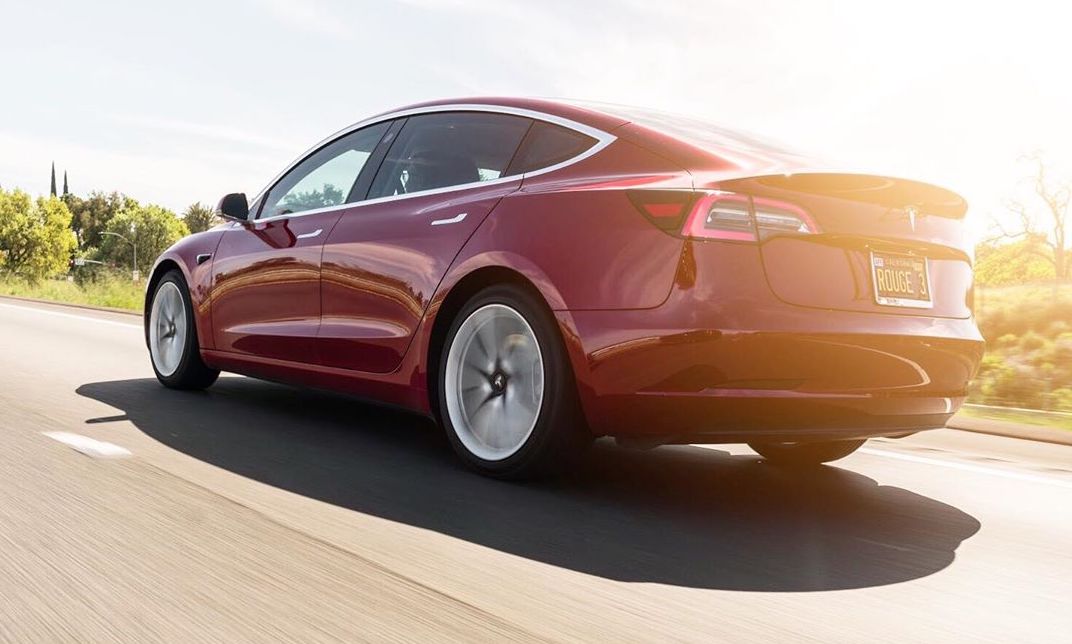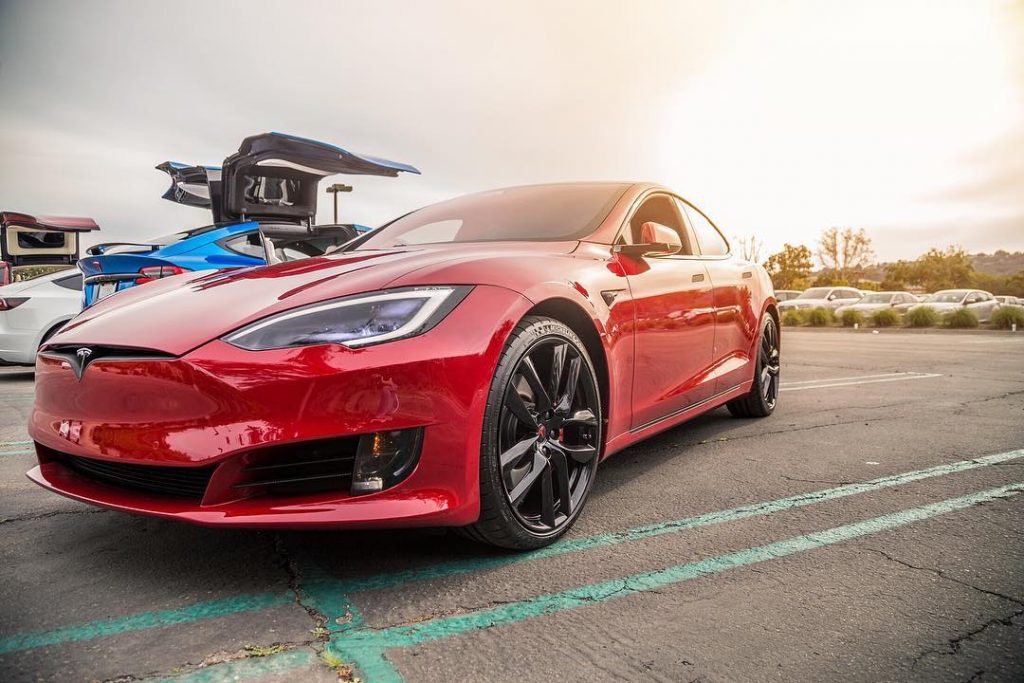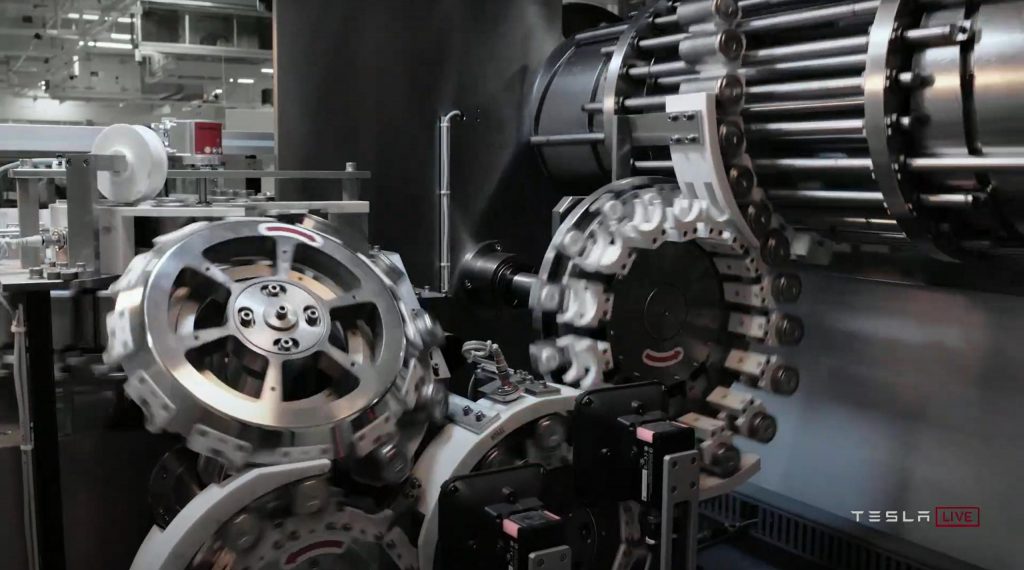

News
Tesla’s S3XY range updates show how ridiculously far legacy auto has fallen in the EV race
Anyone that has followed the Tesla story over the past few years would know that one of the primary talking points against the electric car maker is the impending competition that’s coming from more experienced, more competent carmakers. Critics argued that once legacy automakers get serious in their electric car efforts, a company as inexperienced as Tesla would easily be overwhelmed. This scenario has not happened at all — and if Tesla’s recent range updates to its S3XY lineup are anything to go by, it is becoming evident that legacy auto has fallen ridiculously behind in the electric car race.
Tesla’s recent range updates, which were rolled out together with the “refresh” of the Model 3, further cemented the company’s place at the top of the EV market. With the new updates, the Model 3 Long Range Dual Motor AWD was able to hit an EPA-estimated range of 353 miles per charge, and even its heftier, heavier sibling, the Model Y, was able to achieve a range of 326 miles. The Model X, an incredibly heavy tank of a vehicle, reached 371 miles per charge, and even the power-hungry Tesla Model S Performance is nearing 400 miles at 387 miles per charge.
It should be noted that Tesla was able to accomplish these improvements without any of the big updates that it announced during Battery Day. During the highly-anticipated event, Tesla revealed its batteries’ new 4680 form factor, which has 5x the volume of the Model 3 and Model Y’s 2170 cells. Tesla also announced a new vehicle manufacturing system that prioritizes single-piece casts and a structural battery pack. Other innovations, such as the use of high-nickel cathodes and silicon anodes, were discussed as well.

None of these innovations are in Tesla’s recently-updated vehicles.
Ultimately, Tesla’s recent updates highlight just how far the company has gone ahead of the pack in the electric vehicle sector. The fact that the electric car maker was able to achieve a 371-mile range for the Model X Long Range Dual Motor AWD with the same 100 kWh battery pack and the same 18650 cells as its Model X 100D predecessor is almost ridiculous. This is especially notable considering that the Audi e-tron, which has a battery pack that’s almost the same size as the Model X, has a range of 222 miles, and that’s the variant with the improved range already.
Tesla’s lead in range becomes even more significant when one considers the Model 3 and the Model Y, both of which utilize a battery pack that pretty much tops up at 75 kWh. A comparison of the two vehicles against the competition shows a stark contrast, with the Polestar 2, a car that’s largely considered as a legitimate rival to the Model 3, having an EPA-estimated range of 233 miles from a 78 kWh battery pack. The Jaguar I-PACE, a crossover that’s pretty close in size to the Model Y, follows the same pattern, having an EPA-estimated range of 246 miles per charge from a 90 kWh battery.

There are likely numerous reasons behind Tesla’s insane lead in the electric car sector today, but a good part of it likely has a lot to do with the company’s intense focus on battery tech and development. Tesla has been focused on improving and optimizing its batteries since Day 1, and as could be seen in the recent range updates of the S3XY lineup, this obsessive pursuit of optimization matters a lot. These efforts are not emulated at all with most legacy automakers, as veterans seem typically content with using off-the-shelf batteries from suppliers for their EV programs.
Yet perhaps the most uncomfortable reason behind legacy auto’s distance from Tesla’s vehicles today is something far simpler: hubris. While legacy automakers have been stating for years that they are serious about their future shift to electric cars, their actions have largely been far less tangible than their words. Today, it is almost as if Tesla’s competitors in the EV sector were far too comfortable just watching the electric car maker improve over the years. And now that Tesla has turned into a force that’s very difficult to ignore, they are scrambling to catch up.
Unfortunately, it is very difficult to catch a moving target. By the time legacy automakers can catch up to where Tesla is today, it is almost certain that the electric car maker will be even further ahead. This distance will likely be even farther, too, as Tesla’s next-generation battery technology is yet to enter the picture. Once Tesla’s 4680 cells are in production and its vehicles are being built with structural battery packs, the gap between the electric car maker and its competitors will most definitely be even more significant. And that, at least for legacy auto, is a scenario worthy of the final act of a tragedy.
News
Tesla UK sales see 14% year-over-year rebound in June: SMMT data
The SMMT stated that Tesla sales grew 14% year-over-year to 7,719 units in June 2025.

Tesla’s sales in the United Kingdom rose in June, climbing 14% year-over-year to 7,719 units, as per data from the Society of Motor Manufacturers and Traders (SMMT). The spike in the company’s sales coincided with the first deliveries of the updated Model Y last month.
Model Y deliveries support Tesla’s UK recovery
Tesla’s June performance marked one of its strongest months in the UK so far this year, with new Model Y deliveries contributing significantly to the company’s momentum.
While the SMMT listed Tesla with 7,719 deliveries in June, independent data from New AutoMotive suggested that the electric vehicle maker registered 7,891 units during the month instead. However, year-to-date figures for Tesla remain 2% down compared to 2024, as per a report from Reuters.
While Tesla made a strong showing in June, rivals are also growing. Chinese automaker BYD saw UK sales rise nearly fourfold to 2,498 units, while Ford posted the highest EV growth among major automakers, with a more than fourfold increase in the first half of 2025.
Overall, the UK’s battery electric vehicle (BEV) demand surged 39% to to 47,354 units last month, helping push total new car sales in the UK to 191,316 units, up 6.7% from the same period in 2024.
EV adoption accelerates, but concerns linger
June marked the best month for UK car sales since 2019, though the SMMT cautioned that growth in the electric vehicle sector remains heavily dependent on discounting and support programs. Still, one in four new vehicle buyers in June chose a battery electric vehicle.
SMMT Chief Executive Mike Hawes noted that despite strong BEV demand, sales levels are still below regulatory targets. “Further growth in sales, and the sector will rely on increased and improved charging facilities to boost mainstream electric vehicle adoption,” Hawes stated.
Also taking effect this week was a new US-UK trade deal, which lowers tariffs on UK car exports to the United States from 27.5% to 10%. The agreement could benefit UK-based EV producers aiming to expand across the country.
News
Tesla Model 3 ranks as the safest new car in Europe for 2025, per Euro NCAP tests
Despite being on the market longer than many of its rivals, the Tesla Model 3 continues to set the bar for vehicle safety.

The Tesla Model 3 has been named the safest new car on sale in 2025, according to the latest results from the Euro NCAP. Among 20 newly tested vehicles, the Model 3 emerged at the top of the list, scoring an impressive 359 out of 400 possible points across all major safety categories.
Tesla Model 3’s safety systems
Despite being on the market longer than many of its rivals, the Tesla Model 3 continues to set the bar for vehicle safety. Under Euro NCAP’s stricter 2025 testing protocols, the electric sedan earned 90% for adult occupant protection, 93% for child occupant protection, 89% for pedestrian protection, and 87% for its Safety Assist systems.
The updated Model 3 received particular praise for its advanced driver assistance features, including Tesla’s autonomous emergency braking (AEB) system, which performed well across various test scenarios. Its Intelligent Speed Assistance and child presence detection system were cited as noteworthy features as well, as per a WhatCar report.
Other notable safety features include the Model 3’s pedestrian-friendly pop-up hood and robust crash protection for both front and side collisions. Euro NCAP also highlighted the Model 3’s ability to detect vulnerable road users during complex maneuvers, such as turning across oncoming traffic.
Euro NCAP’s Autopilot caution
While the Model 3’s safety scores were impressive across the board, Euro NCAP did raise concerns about driver expectations of Tesla’s Autopilot system. The organization warned that some owners may overestimate the system’s capabilities, potentially leading to misuse or inattention behind the wheel. Even so, the Model 3 remained the highest-scoring vehicle tested under Euro NCAP’s updated criteria this year.
The Euro NCAP’s concerns are also quite interesting because Tesla’s Full Self-Driving (FSD) Supervised, which is arguably the company’s most robust safety suite, is not allowed for public rollout in Europe yet. FSD Supervised would allow the Model 3 to navigate inner city streets with only minimal human supervision.
Other top scorers included the Volkswagen ID.7, Polestar 3, and Geely EX5, but none matched the Model 3’s total score or consistency across categories. A total of 14 out of 20 newly tested cars earned five stars, while several models, including the Kia EV3, MG ZS, and Renault 5, fell short of the top rating.
Elon Musk
Why Tesla’s Q3 could be one of its biggest quarters in history
Tesla could stand to benefit from the removal of the $7,500 EV tax credit at the end of Q3.

Tesla has gotten off to a slow start in 2025, as the first half of the year has not been one to remember from a delivery perspective.
However, Q3 could end up being one of the best the company has had in history, with the United States potentially being a major contributor to what might reverse a slow start to the year.
Earlier today, the United States’ House of Representatives officially passed President Trump’s “Big Beautiful Bill,” after it made its way through the Senate earlier this week. The bill will head to President Trump, as he looks to sign it before his July 4 deadline.
The Bill will effectively bring closure to the $7,500 EV tax credit, which will end on September 30, 2025. This means, over the next three months in the United States, those who are looking to buy an EV will have their last chance to take advantage of the credit. EVs will then be, for most people, $7,500 more expensive, in essence.
The tax credit is available to any single filer who makes under $150,000 per year, $225,000 a year to a head of household, and $300,000 to couples filing jointly.
Ending the tax credit was expected with the Trump administration, as his policies have leaned significantly toward reliance on fossil fuels, ending what he calls an “EV mandate.” He has used this phrase several times in disagreements with Tesla CEO Elon Musk.
Nevertheless, those who have been on the fence about buying a Tesla, or any EV, for that matter, will have some decisions to make in the next three months. While all companies will stand to benefit from this time crunch, Tesla could be the true winner because of its sheer volume.
If things are done correctly, meaning if Tesla can also offer incentives like 0% APR, special pricing on leasing or financing, or other advantages (like free Red, White, and Blue for a short period of time in celebration of Independence Day), it could see some real volume in sales this quarter.
You can now buy a Tesla in Red, White, and Blue for free until July 14 https://t.co/iAwhaRFOH0
— TESLARATI (@Teslarati) July 3, 2025
Tesla is just a shade under 721,000 deliveries for the year, so it’s on pace for roughly 1.4 million for 2025. This would be a decrease from the 1.8 million cars it delivered in each of the last two years. Traditionally, the second half of the year has produced Tesla’s strongest quarters. Its top three quarters in terms of deliveries are Q4 2024 with 495,570 vehicles, Q4 2023 with 484,507 vehicles, and Q3 2024 with 462,890 vehicles.
-

 Elon Musk4 days ago
Elon Musk4 days agoTesla investors will be shocked by Jim Cramer’s latest assessment
-

 News1 week ago
News1 week agoTesla Robotaxi’s biggest challenge seems to be this one thing
-

 Elon Musk2 weeks ago
Elon Musk2 weeks agoFirst Look at Tesla’s Robotaxi App: features, design, and more
-

 News2 weeks ago
News2 weeks agoSpaceX and Elon Musk share insights on Starship Ship 36’s RUD
-

 News2 weeks ago
News2 weeks agoWatch Tesla’s first driverless public Robotaxi rides in Texas
-

 News1 week ago
News1 week agoWatch the first true Tesla Robotaxi intervention by safety monitor
-

 News2 weeks ago
News2 weeks agoTesla has started rolling out initial round of Robotaxi invites
-

 Elon Musk2 weeks ago
Elon Musk2 weeks agoTesla to launch in India in July with vehicles already arriving: report

















